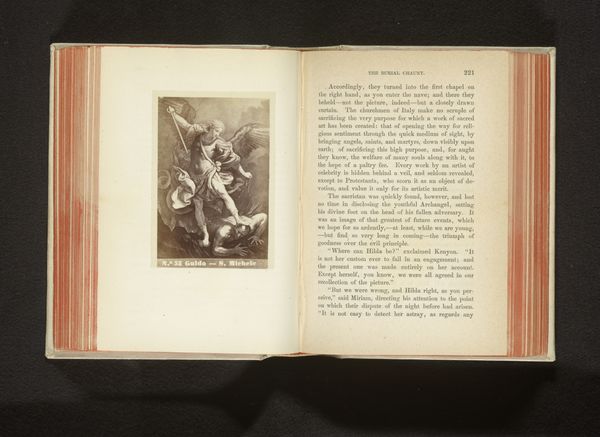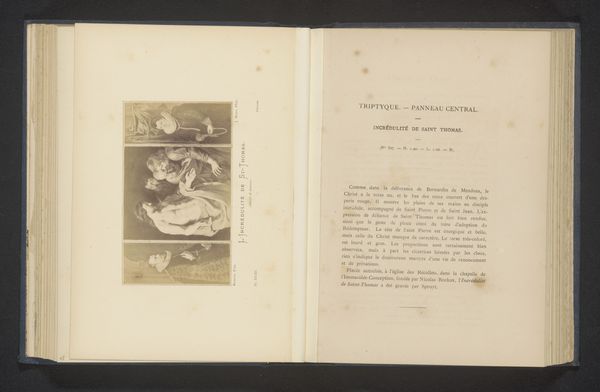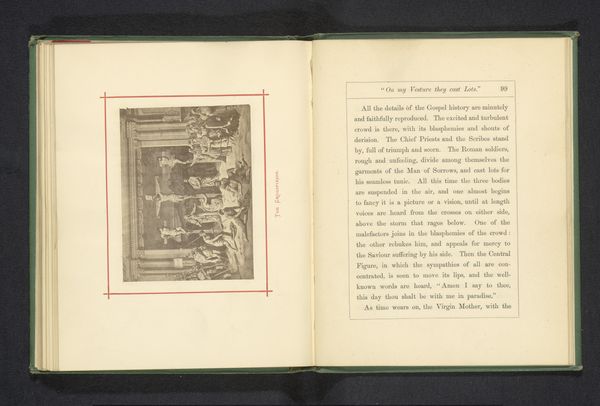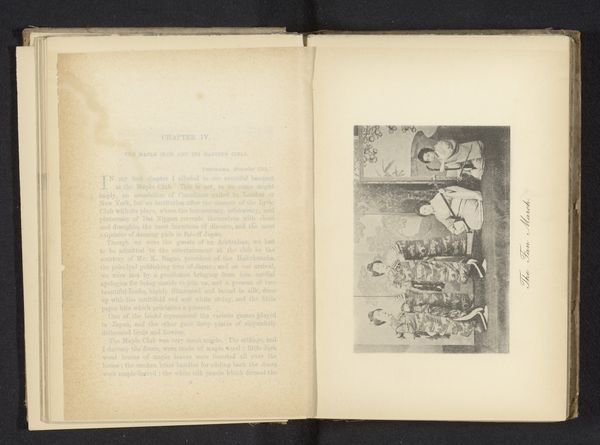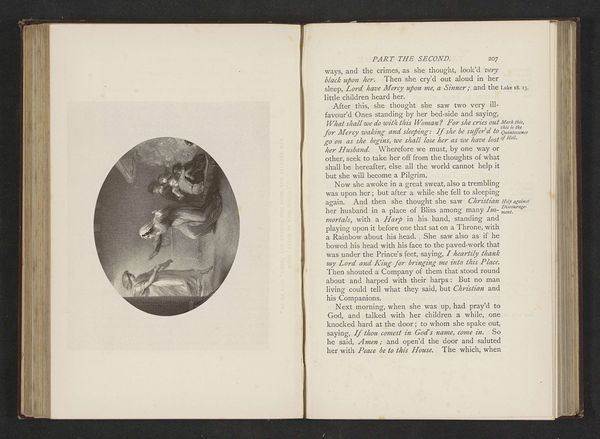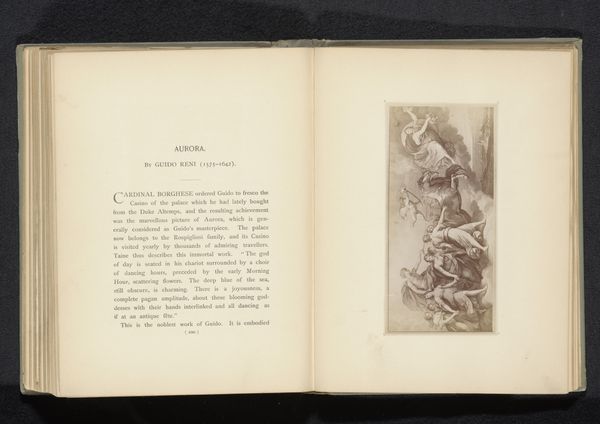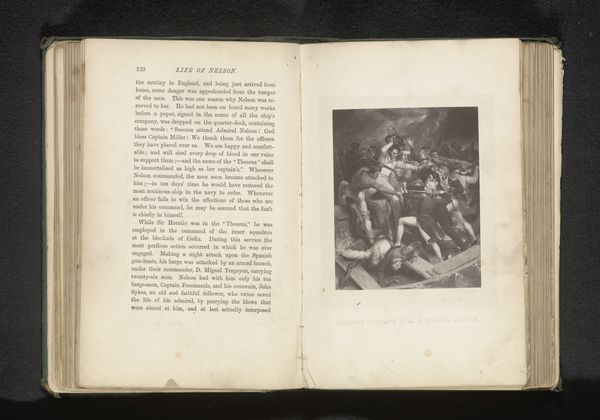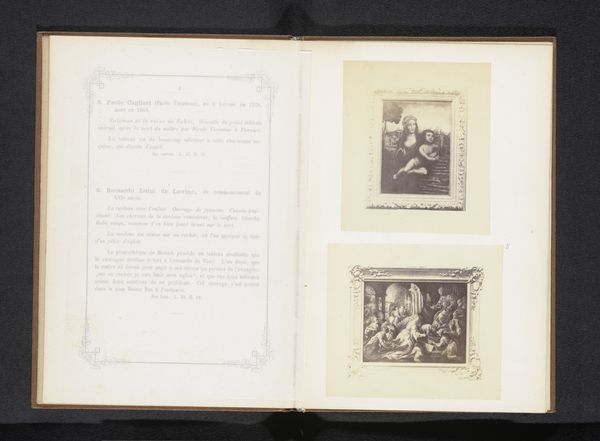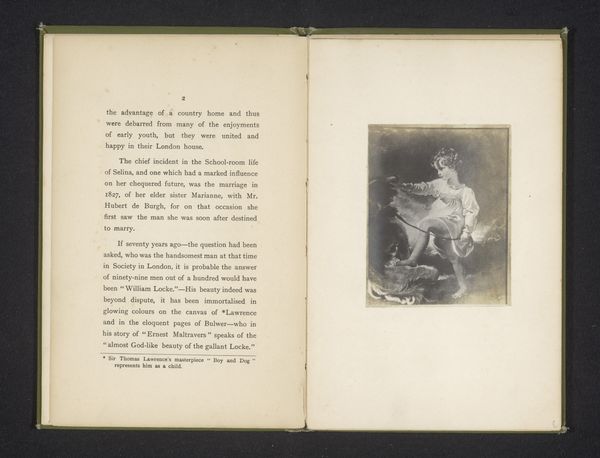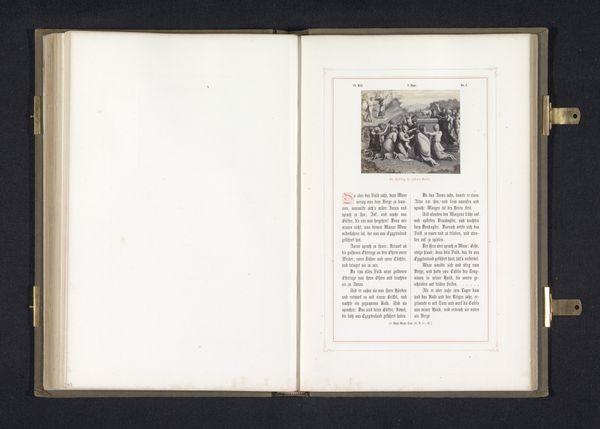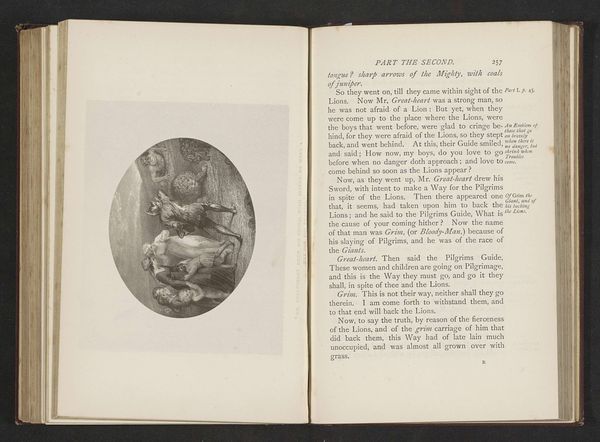
drawing, print, photography, ink
#
portrait
#
drawing
# print
#
photography
#
ink
#
coloured pencil
Dimensions: height 87 mm, width 56 mm
Copyright: Rijks Museum: Open Domain
Curator: Here, in this display, is a photograph of a drawing. Its inscription reads, “Michael the Archangel, Guido, Church of the Capuchins.” It likely dates to before 1873, placing it in a time when photography was burgeoning as a way to reproduce and distribute artwork. Editor: My initial impression is one of stark drama. Michael's forceful pose against the defeated figure is a powerful visual statement, yet the monochrome tones give it a muted, historical feel. It’s a battle rendered in sepia, like a memory of a struggle. Curator: Exactly. This image documents a piece created by Guido Reni, from the 17th century. What strikes me is the decision to photograph this specific piece, linking it to artistic legacy. Editor: The photographic medium introduces new layers. Consider the dissemination of power dynamics. Is this about reverence, documentation, or about wresting control of the narrative? Seeing the heroic angel rendered in what we now see is old photography introduces complex tensions to an original artwork made centuries earlier. Curator: That tension speaks directly to photography’s democratizing force in the 19th century. Art became more accessible, severing it from its elite, location-specific context. A middle-class family in Amsterdam, for instance, could engage with Italian Renaissance ideals. Editor: But at what cost? By decontextualizing the image of Michael, what else has been lost? How do such visual reproductions reshape and refocus attention, for better or worse? Curator: Those questions certainly echo the broader debates about authenticity and cultural appropriation inherent in mass reproduction. Yet, to its original viewers, this photograph was about exposure and art appreciation beyond what might have been achievable otherwise. Editor: Perhaps in this small photo, we see the tension between art's sacred origins and it's subsequent accessibility—a struggle between high art and mass consumption visualized right before our eyes. Curator: Precisely. This image encapsulates so much: faith, art history, the democratizing forces of photography, and the beginning of the debates around authenticity that continue today. Editor: Indeed. I'm struck by the enduring nature of its subject. That ancient battle of good versus evil—still resonating, adapted, and argued over through the centuries and various mediums.
Comments
No comments
Be the first to comment and join the conversation on the ultimate creative platform.
